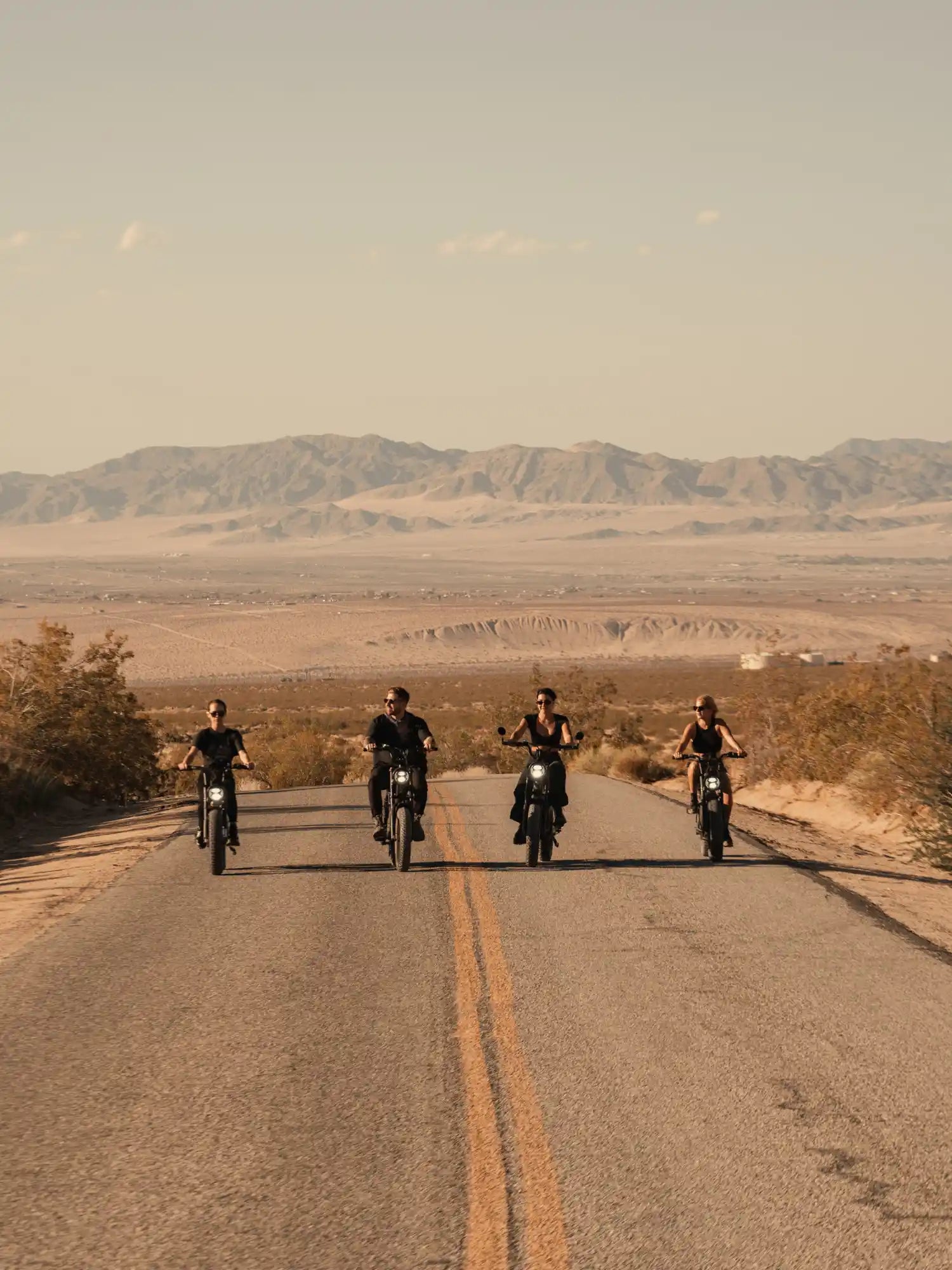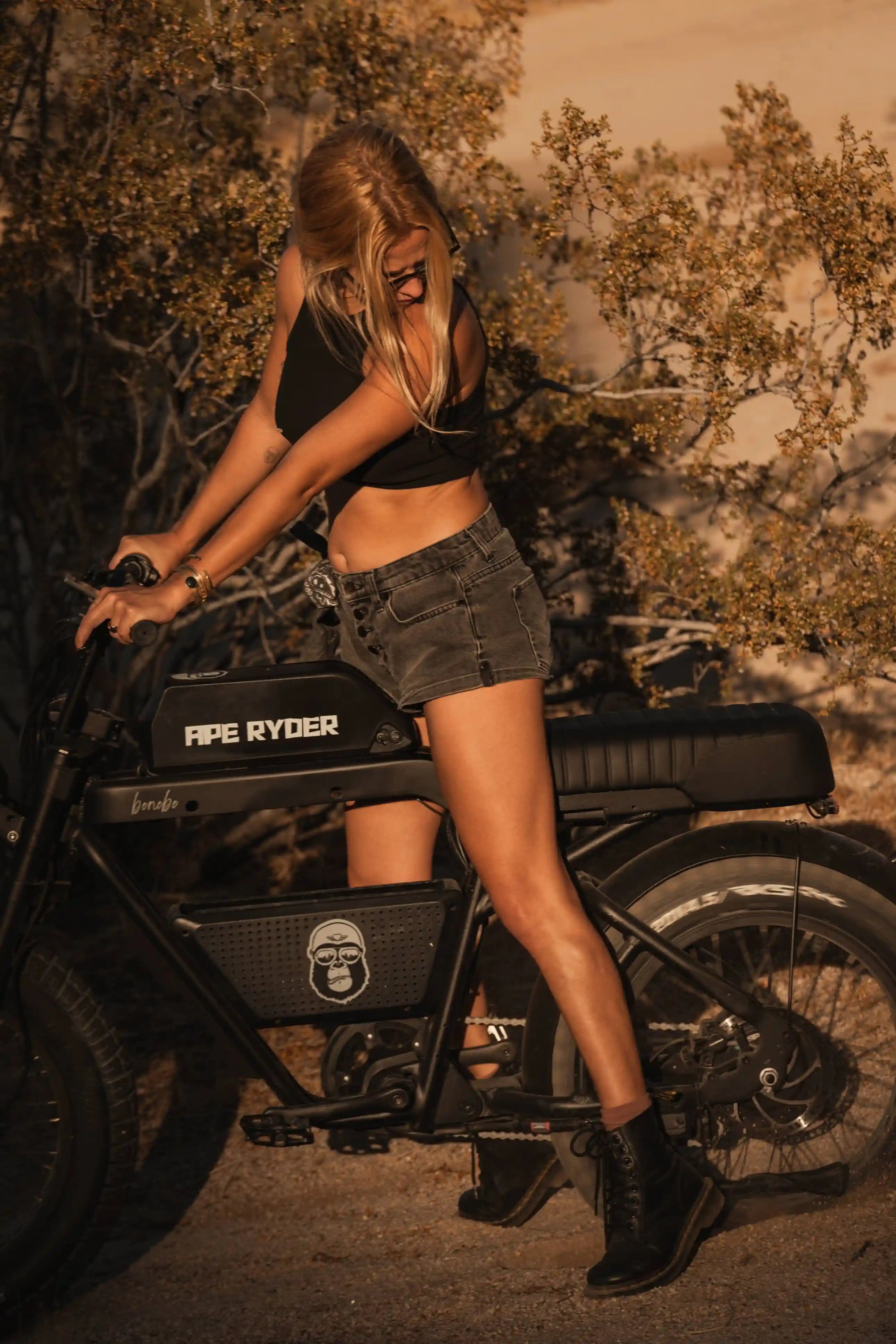Electric bikes, or e-bikes, change the commute, explore, and enjoy the outdoors. Knowing what really goes into an e-bike will further enhance the ride for the eco-sensitive bike rider, cycling enthusiast, outdoor explorer, or tech-savvy cyclist. The following blog will get you through the must-have components of an e-bike, sprinkled with practical insights and examples to wring out the best ride.
The Frame – The Backbone of Your E-bike
Well, just like the conventional bicycle, the frame is the skeleton of the e-bike. The frames can be aluminum, carbon fiber, or steel. Aluminum frames are lightweight and strong, thus a great choice for riders. With the carbon fiber frames, you have an even lighter option with great shock absorption qualities that excel in performance for the best riders. On their side, steel frames are heavy, producing a smooth ride with superb strength.
Battery – The Power House of Your Ride
An e-bike battery is definitely the most critical part. It will define how long and how far you can ride on one full charge. Most of the e-bikes use Li-ion batteries because they have high energy density and a longer lifetime. Such batteries are very lightweight and can be charged hundreds of times before needing to be replaced. For example our Gibbon electric bike has 40V, 20AH battery or a smooth and long rides.
The Motor – The Heartbeat of Your E-bike
Basically, the motor is what differentiates e-bikes from just plain bicycles. There are primarily three types of motors applied in e-bikes:
1. Hub Motors: These motors are basically located at the front or rear wheel hub. They are very simple machines, provide continuous power output, so they do quite well on flat terrains and urban commutes.
2. Mid-drive Motors: They are mounted at the bottom bracket of the bike and are considered better for weight distribution and efficiency. They are very suitable for areas with hills and off-road riding.
3. Friction Drive Motors – Not so common, this type has a motor rubbing up against the rear tire. It's easy to fit and remove, giving flexibility to those who wish to use the e-bike on an occasional basis.
Motor power is measured in watts. Typical power ratings for e-bikes would be anywhere between 250W and 750W. The higher the rating of a motor, the greater its torque, and the better it will perform up steeper inclines; however, this potentially impacts battery life.
The Controller – The Brain Behind the Scenes
It's the unsung hero of the e-bike—the controller is what functions as the 'brain' that manages the power distribution from the battery to the motor. It reads the rider's input, either directly from the throttle or indirectly through a pedal assist system, and modulates motor power output accordingly. Controllers range from very simple to complex and feature-rich. Some give basic on/off operation; others may offer multiple levels of pedal assist and throttle control for a much more tailored ride.
The Pedal Assist System (PAS)—Enhancing Your Ride
The Pedal Assist System is essentially what distinguishes e-bikes from electric scooters or mopeds. It senses the pedaling of a rider and provides motor assistance in line with the preferred level selected. This augurs well for a smooth ride, especially up inclines or over long distances.
In principle, there are basically three kinds of PAS:
1. Cadence Sensor PAS – This measures the rotation of the pedals. It switches on the motor once pedaling commences and provides continuous assistance.
2. Torque Sensor PAS – This measures the force that one is applying to the pedals. A more natural feel of riding because it changes the power the motor gives according to how hard one pedals.
3. Combined Sensor PAS – Uses cadence and torque sensors for a smooth and responsive ride.
Level assistance generally has multiple options that a rider selects from to adjust the power output. These include low, medium, and high, thus saving batteries or making it easy on the rider while pedaling.
The Throttle – Power at Your Fingertips
While the PAS requires pedaling to turn its motor on, the throttle does so without pedaling on the part of the rider. This is particularly useful when rapid acceleration is required or when the rider needs a rest from pedaling. There are different kinds of throttles:
1. Thumb Throttle: The thumb presses a lever that activates it. It's easy to use and offers total control over the motor.
2. Twist Throttle: It's a throttle similar to those used on motorcycles. The handlebar grip is twisted to activate it, slowly engaging the motor.
3. Push-Button Throttle: A basic on-off switch that when pushed will turn the motor on at full power.
Not all e-bikes have a throttle, and in some areas, the laws related to them are different. It is a pretty good idea to be sure what local laws say about an e-bike with a throttle before buying one.
The Display – Your Ride's Command Center
The display of an e-bike is the cockpit; it is the command center where all information of relevance is received by the rider and where controls are operated from. There are various types of displays, which range from the simple use of LED indicators to the sophistication of an LCD screen. Features to look out for include:
• Speedometer – This feature shows the rider's current speed.
• Odometer – It is the recording meter for total distances traveled.
• Battery Indicator – The display feature for the amount of battery power left.
• Assist Level Selector – It is your selection of the preferred level of pedal assist.
Advanced displays can boast additional functionalities of navigation and even being a heart-rate monitor, along with smartphone integration capabilities. Some e-bikes have companion apps for more extensive adjustment and ride analytics.
The Brakes – Safety First
Proper stopping of an e-bike is essential to the safety of the rider. E-bikes always come fitted with stronger braking systems than regular bicycles since e-bikes travel at faster speeds and are heavier. There are mainly two types of brakes applied:
1. Disk Brakes: Known to have good braking performance in any condition and are reliable. They may be mechanical or hydraulic; hydraulic disk brakes with better performance and less maintenance.
2. Rim Brakes: Lighter and simpler but with less effectiveness in wet weather. Although they are less frequent in modern e-bikes, some models still apply this because it is light, simple, and easily maintained.
Some e-bikes offer regenerative braking, which recharges the battery when braking, but this is more common in electric cars.
The Drivetrain – Moving Forward
The drivetrain of an e-bike involves a chain, gears, and a derailleur. It works by applying force from pedals to the wheel. Most modern e-bikes include either:
1. Single-Speed Drivetrains: Simple, require less maintenance. Suitable for flat terrains and urban commutes.
2. Multi-Speed Drivetrains: A selection of gears for a variety of terrain and riding conditions. They are much more flexible and suitable for hilly areas and off-road adventures.
High-performance drivetrains from reliable suppliers like Shimano and SRAM run smooth, and performance is dependable.
The Wheels – Rolling Along
E-bike wheels are critical to overall performance. Their size and type vary according to riding style and terrain. Here's a resume of common sizes:
• -26-inch wheels are very versatile, striking the right note for stability and quick response alike. They fit most rider sizes and are great for most terrains.
• 27.5-inch wheels have better grip and control, so work the best for mountain biking.
• 700c wheels tend to be found on road bikes and offer a paved-friendly ride.
The selection of tire types goes just as far into the paramount in the kind of ride you will want. If one sticks to smooth roads are the articles prescriptions, it's a slick tire. For off-road trails, one gets better grip and stability on a knobby tire.
The Suspension – Smooth Riding
Suspension systems are another critical component of e-bikes for better comfort and control on rough terrains. There shall be, primarily, three kinds to consider:
• Front Suspension: Also known as a suspension fork, this system absorbs shocks originating in the front wheel and finds major application in mountain and hybrid e-bikes.
• Rear Suspension: This system is mounted on full-suspension e-bikes for comfort and control and absorbs shocks that come from the rear wheel.
• No Suspension: Rigid e-bikes have no suspension, which makes them lighter and more efficient on smooth surfaces - thus, just right for urban commutes.
For example our Bonobo e-bike has dual suspension, it has both front and rear suspension.
How you ride your e-bike best determines the kind of suspension you need. For rough trails and riding off-road, a full-suspension bike is a sure bet, while if you're going to stay within the bounds of city riding, a front or rigid suspension would be more than adequate.
The Lights – See and Be Seen
One major part of being an e-bike rider on the road amongst motor vehicle traffic is visibility. As a general rule, e-bikes are fitted with both head and rear lights for added safety:
- Head Lights: Headlights assist the rider in seeing down the path during conditions of poor light. High-lumen LED lights are favored for their brightness and low power consumption.
- Rear Lights: These lights greatly enhance the rider's visibility from the rear to all other road users; the flashing rear lights establish a very good example of catching drivers' attention most effectively.
There are a few e-bikes with incorporated lighting systems that are powered via the primary battery; this enhances convenience even further by getting rid of the requirement for separate batteries.
The Accessories – Personalize Your Ride
There are quite a few variants of e-bikes that have a different set of accessories trying to enrich riders' experiences in satisfying a variety of needs. Some of the popular options include:
- Fenders: These act as the first line of defense against mud and water splashes, keeping riders dry and clean during the ride.
- Racks and Panniers: They provide extra space to store items, thus assisting in carrying groceries, bags, and other items. They are especially useful for commuters and for travel over long distances.
- Kickstands: It literally makes parking your e-bike so easy and safe, rather than leaning the motorcycle on any base or place.
Even morepersonalization can be added to these bikes by way of phone mounts, mirrors, or bells, which enhance their convenience and safety when riding.









Leave a comment
All comments are moderated before being published.
This site is protected by hCaptcha and the hCaptcha Privacy Policy and Terms of Service apply.